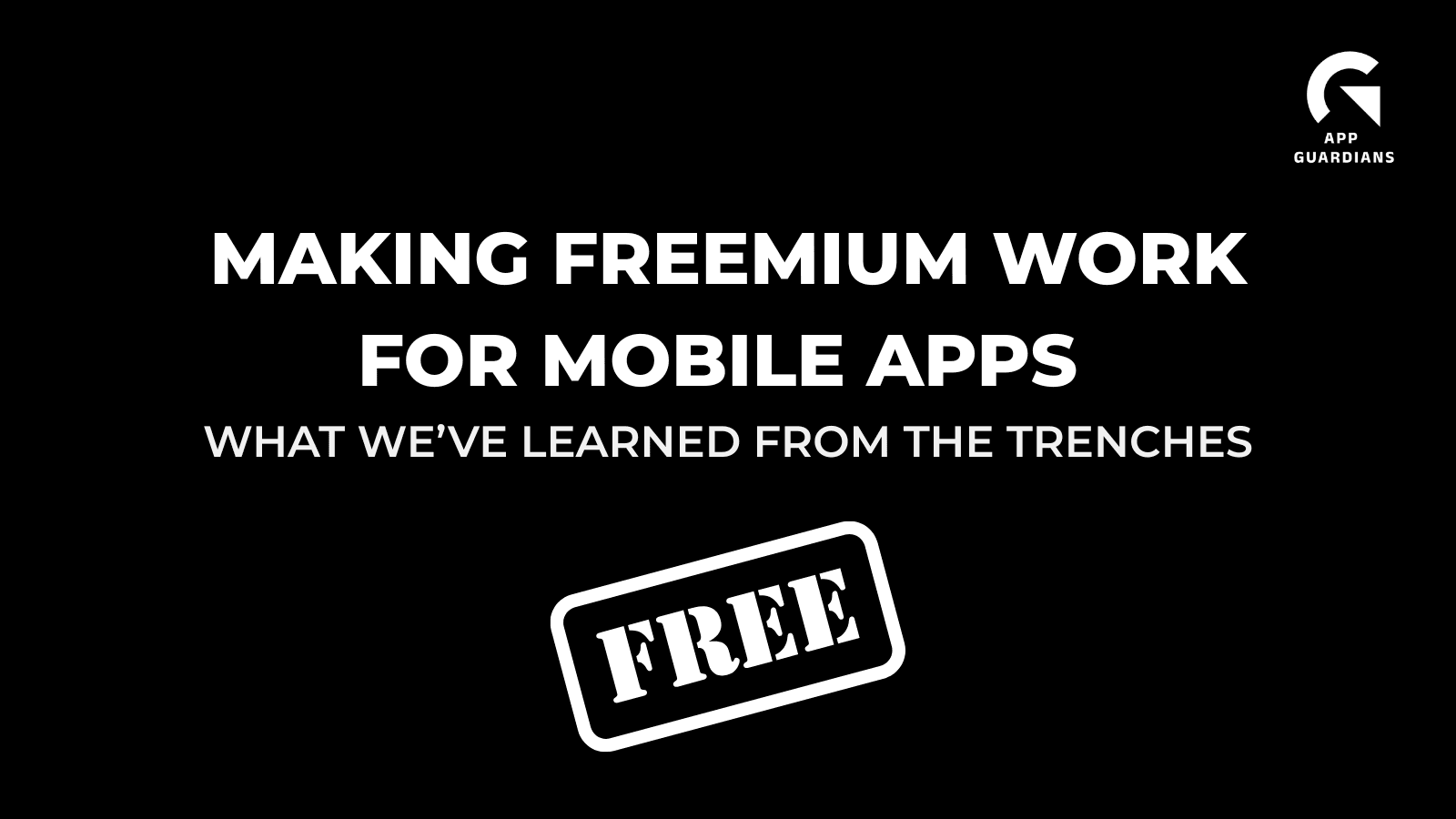Making Freemium Work for Mobile Apps
In today’s app economy, the “hard paywall or bounce” model is losing its edge. Users are savvier, competition is higher, and expectations around free access are now the norm. That’s where the freemium model comes in — giving users a taste of your product before asking for payment.
But launching freemium isn’t just flipping a switch. It’s a carefully designed strategy that impacts product, analytics, engagement, and ultimately revenue. Here’s what app marketers and founders need to know if they’re considering this shift.
Why Apps Launch Freemium
Freemium is about more than generosity. Done right, it solves a key challenge: many users won’t pay blindly for content or features they don’t fully understand yet. A free entry point lowers the barrier, builds trust, and lets users experience the app’s value before committing.
Common reasons companies introduce freemium include:
-
Improving the top of funnel: Capture users who would otherwise churn at the paywall.
-
Building credibility: Even 1–2 free workouts, articles, or lessons can showcase expertise and establish trust.
-
Boosting engagement: MAUs climb when users have more reasons to stay installed, which also improves organic visibility.
-
Driving upsell opportunities: Locked features, trial upgrades, and well-timed prompts give multiple chances to convert.
What a Successful Freemium Experience Needs
The difference between a successful freemium funnel and a failed one is design. The key is to provide enough value to hook users, but keep your best features gated to create friction that nudges upgrades.
From our experience guiding app teams through this shift, a strong freemium layer should include:
-
A clear sample program or feature: Something foundational that demonstrates quality without giving away the full library.
-
Visibility of premium content: Show thumbnails, titles, or blurred previews of locked content so users see what they’re missing.
-
Smart paywall triggers: Every time a freemium user taps into locked content, a contextual upgrade message should appear.
-
Simplicity: Avoid overcomplicating pricing with too many options.
The psychology here is simple: value tease, low barrier to entry, friction leading to conversion.
The Pros and Cons of Freemium
Like any strategy, freemium comes with trade-offs.
Pros
-
Higher retention in early days (users explore instead of uninstalling).
-
Increased opportunities for upsells via in-app messages, push, and email.
-
Reduced deletions from users who “just wanted to try it.”
Cons
-
Short-term revenue may dip as Day 1 conversions shift to longer conversion cycles.
-
Risk of cannibalization if free access feels “good enough.”
-
Additional complexity in onboarding, analytics, and lifecycle campaigns.
The reality is that freemium changes the timing of monetization. You’re not chasing Day 1 conversions as fiercely as you once were; instead, you’re nurturing longer paths to paid.
The Importance of Analytics
When launching freemium, data becomes your compass. Without the right event tracking, it’s impossible to know if the model is working or where to optimize.
Critical events to track include:
-
Paywall choice split (who subscribes, who explores free, who bounces).
-
Which free content gets the most engagement (and predicts upgrades).
-
Retention by cohort (freemium vs. trial vs. paid).
-
Time from install → conversion.
-
Upsell triggers (which locked features drive the most upgrade attempts).
- Average revenue per user (ARPU)
This data doesn’t just tell you what is happening; it helps you fine-tune what to give away, what to lock, and how to message upgrades.
Engagement Strategy is Everything
A freemium user is not a lost user — they’re a warm lead. That’s why engagement strategy is essential.
The most effective approaches we’ve seen include:
-
Welcome video or guided intro: Sets tone, builds trust, and positions premium as the logical next step.
-
In-app prompts tied to behaviour: Trigger upgrades when users complete a happy action. For example complete a free workout, watch a video, use a key feature or open the app after several days.
-
Freemium-specific lifecycle campaigns: Weekly emails or push notifications that reinforce value, use social proof, and highlight what paid unlocks.
-
Personalized upgrade nudges: Messaging that aligns with the user’s behaviour.
Freemium isn’t just about opening the gates — it’s about creating an intentional funnel that nurtures curiosity into commitment.
The Reality of Freemium
If you’re considering freemium, set expectations accordingly. You’ll likely see:
-
Increase in Day 1 retention: More users exploring instead of deleting.
-
Decrease in Day 1 activations: Paid sign-ups shift later in the funnel.
-
Higher long-term conversions: With the right nudges, many of those retained users eventually upgrade.
The key is patience, tracking, and iteration. Freemium is not a magic bullet, but when executed well, it can create a healthier funnel, stronger brand presence, and higher lifetime value per user.
Final Takeaway
Freemium works best when it’s intentional. Give users just enough to feel the value, keep the upsell path simple and clear, and back it up with strong analytics and engagement campaigns.
At our agency, we’ve seen firsthand that the right freemium model can transform a product’s growth trajectory — but only if it’s paired with rigorous testing, data-driven decisions, and a commitment to nurturing users beyond Day 1.
Related Articles
In today’s app economy, the “hard paywall or bounce” model is losing its edge. Users are savvier, competition [...]
Two major updates from Apple have landed — and if you work in app marketing, growth, user acquisition, [...]
The Digital Markets Act and the Digital Services Act are two major pieces of legislature brought forth from [...]









